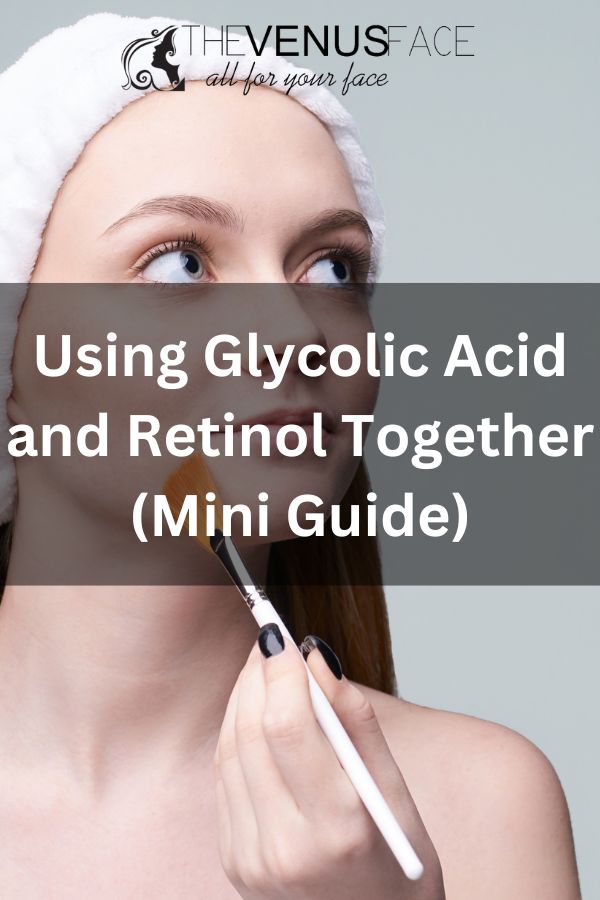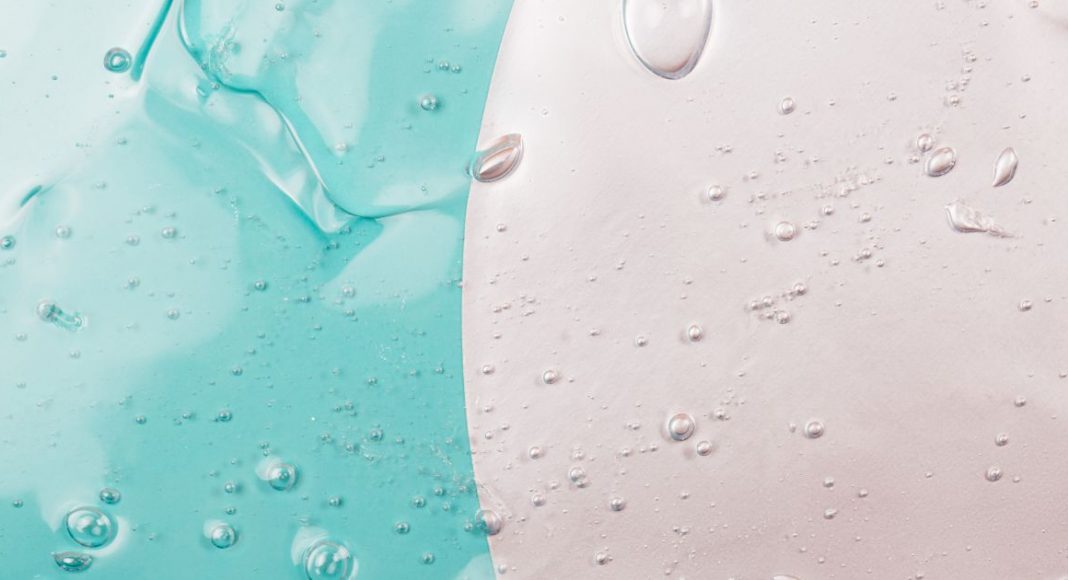This post shows how to use glycolic acid and retinol together.
Glycolic acid is a type of Alpha Hydroxy Acid (AHA) that is derived from sugar cane. It is the smallest molecule in the AHA family, which means it can penetrate the skin more deeply than other AHAs. Glycolic acid has been shown to be effective in reducing the appearance of fine lines, wrinkles, and uneven skin tone. It can also help to improve the clarity and overall health of the skin. This acid works by breaking down the bonds that hold together dead skin cells. This process allows new, healthy cells to come to the surface and gives the skin a more youthful appearance. Glycolic acid is available in a variety of over-the-counter skin care products, including cleansers, toners, serums, and moisturizers…
Retinol is a form of vitamin A that is commonly used in skincare products. When applied to the skin, retinol helps to reduce the appearance of wrinkles and fine lines. It also helps to even out skin tone and texture. In addition, retinol can help to prevent breakouts by keeping pores clear.
Chances are, you may have both glycolic acid and retinol in your skincare routine. This blog post will explore the benefits of using these two ingredients together.

Can you use glycolic acid and retinol together?
Yes, you can. Studies, research, and experimentations have shown there is no hurt in using these two products together as long as you don’t have sensitive skin. In fact, sensitive skin is the most difficult skin type to work with when using skincare/makeup products. Otherwise, glycolic acid and retinol can be used together to achieve beautiful, healthy skin. When using these two products together, it’s important to start slowly and notice how your skin reacts. If it makes your skin irritated, stop using them.
The best practice is to use these 2 products on different days or nights. For example, you can use glycolic acid in the morning and retinol at night. This way, you can still benefit from the effects of both ingredients while giving your skin a chance to adjust.
Can you mix glycolic acid and retinol?
No, you shouldn’t mix these two products together because they may be too harsh for your skin, which will cause irritation. As said above, it’s best to use them on different days or at different times on the same day. With that being said, there are people with insensitive skin that can mix these two products without any problems. However, it’s better to be safe than sorry.
How to use glycolic acid and retinol?
As mentioned above, it’s best to use these two products on different days. Here is the detail on how you can use them together:
For glycolic acid products
Glycolic often comes in the form of toner, serum, pads… Simply apply it to your skin after cleansing your face. Just follow the instruction on the packaging. Start with using this acid 2-3 times a week and see how your skin reacts. If your skin is getting used to it, you can increase the frequency to every other day or even daily. If it irritates your skin, stop using this acid because it seems like you have very sensitive skin, therefore consider trying another skincare product.
For retinol products
Retinol often comes in the form of serums, creams…It is recommended to use the retinol serum because it penetrates the skin better.
Assuming that glycolic acid doesn’t cause irritation, now you can introduce retinol to your skincare routine.
You can start using retinol every other night, then increase the frequency as your skin gets used to it.
Scheduling the use of glycolic acid and retinol
After getting used to both products, now you can use glycolic acid and retinol 3 times a week, on alternate days. For example:
- Using glycolic acid on the morning of Monday, Wednesday, and Friday
- Using retinol at night on Tuesday, Thursday, and Saturday.
Retinol makes your skin more photo-sensitive, so it’s important to use sunscreen when going outside during the day. Or the best practice is to use it at night.
Final thoughts
There are a ton of benefits to using these liquids. These two ingredients can help to achieve beautiful, healthy skin. Just be patient when introducing them to your skin and pay attention to how your skin reacts. If you see any irritation, stop using these products immediately. Other than that, enjoy the amazing benefits they have to offer!
More:
- Using Salicylic Acid and Retinol Together (Mini Guide)
- Using Hyaluronic Acid and Retinol Together (Mini Guide)
- Using Azelaic Acid and Retinol Together (Mini Guide)
- Using Lactic Acid and Retinol Together (Mini Guide)
F.A.Q
Glycolic acid or retinol for hyperpigmentation?
Both can help with hyperpigmentation. However, retinol is more effective at treating hyperpigmentation, but the best practice is to combine the two for the best results.
Difference between retinol and glycolic acid?
It does not make sense to compare these two because they are totally different and used for different purposes. Glycolic acid is an AHA, while retinol is a vitamin A derivative. Glycolic acid works by exfoliating the skin, while retinol works by increasing cell turnover.
Is glycolic acid or retinol better for acne?
Glycolic acid is better because it helps to exfoliate the skin and unclog pores, which is what acne sufferers need.


